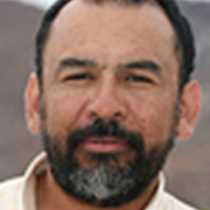Espiritu Santo-Partida Island, Gulf of California
After a bumpy journey over the waters of the Sea of Cortez last night coming from Cabo San Lucas, we finally reached Espiritu Santo-Partida, a two-island complex just 20 miles off La Paz City. Once there, we visited different beaches on the western side to conduct different but interesting activities. Many of us decided to just stay on the beach, whereas others preferred to go kayaking in the beautiful emerald colored waters of the bays, and still others snorkeled in what resulted in a magnificent and unexpected rocky site.
Everybody, at different times during the day and afternoon, hiked on the rocky and vegetated arroyos, or former river beds, encountering many types of wildlife. As there was rain during January and February, we observed flowers of the Jasmin de la Sierra, “ruelias,” and prickly pears, among others. The birders were delighted by the occurrence of many verdins, Costa’s hummingbirds, cactus and canyon wrens, and even red-tailed hawks.
For those who like land mammals and reptiles, the island showed them its endemic antelope squirrels in great numbers. As many as 10 chuckwallas were seen in diverse rocks and positions, and even in crevices or under boulders. We caught one, and the bravest of us petted it (photo). The afternoon was quiet and relaxing with many spiny and banded rock lizards around, and finished with a deserved barbecue on shore. At the end of dinner, we were captivated by the story about the creation of the Mexica World and the founding of Mexico-Tenochtitlan-Cuauhtli-Itlacuayan.
After a bumpy journey over the waters of the Sea of Cortez last night coming from Cabo San Lucas, we finally reached Espiritu Santo-Partida, a two-island complex just 20 miles off La Paz City. Once there, we visited different beaches on the western side to conduct different but interesting activities. Many of us decided to just stay on the beach, whereas others preferred to go kayaking in the beautiful emerald colored waters of the bays, and still others snorkeled in what resulted in a magnificent and unexpected rocky site.
Everybody, at different times during the day and afternoon, hiked on the rocky and vegetated arroyos, or former river beds, encountering many types of wildlife. As there was rain during January and February, we observed flowers of the Jasmin de la Sierra, “ruelias,” and prickly pears, among others. The birders were delighted by the occurrence of many verdins, Costa’s hummingbirds, cactus and canyon wrens, and even red-tailed hawks.
For those who like land mammals and reptiles, the island showed them its endemic antelope squirrels in great numbers. As many as 10 chuckwallas were seen in diverse rocks and positions, and even in crevices or under boulders. We caught one, and the bravest of us petted it (photo). The afternoon was quiet and relaxing with many spiny and banded rock lizards around, and finished with a deserved barbecue on shore. At the end of dinner, we were captivated by the story about the creation of the Mexica World and the founding of Mexico-Tenochtitlan-Cuauhtli-Itlacuayan.




